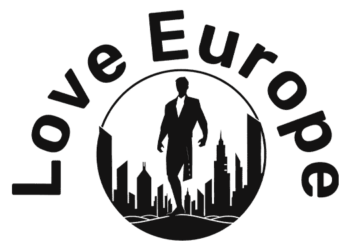The EU wallet: what stage is the project at now?
The EU Wallet really got started in June 2021 when the Commission proposed a framework for a new European digital identity platform. The proposal amended the existing 2014 eIDAS to eIDAS 2. In 2023, the Council presidency and European Parliament reached agreement on this new framework.
In the current pre-launch stage stakeholders are working hard to research the potential use cases for the wallet, explore how the tech will work and refine what the user experience will look like.
That process took a big leap forward in May 2023, when the EU announced four large-scale pilot projects. These pilots involve approximately 360 entities, including private companies and public authorities from 26 member states, Norway, Iceland, and Ukraine. They are scheduled to continue until 2025.
The four pilots are as follows:
#POTENTIAL
The project is looking at the experience across six digital identity sectors — governmental services, banking, telecommunications, mobile driving licences, electronic signatures, and health.
#NOBID
Exploring the development of the wallet for authorising payments across Iceland, Norway, Denmark, Latvia, Germany and Italy.
#The EU Digital Identity Wallet Consortium (EWC)
This pilot tests uses related to digital travel credentials.
#DC4EU
Focused on educational and social security sectors and the potential for interoperable, cross-border service.
These projects are now under way, supported by some of the world’s foremost multinationals. Thales is part of both the Potential and the NOBID consortia.
In its work on Potential, Thales is leveraging its expertise in digital security. Specifically, it is focusing on the secure element in the smartphone to ensure maximum security for the wallet. As part of NOBID, Thales is in charge of adapting the open source EU digital ID Wallet reference app to payment use cases.
For all stakeholders, the objective of the four pilots is to test the EU Wallet across a range of everyday scenarios, and gather feedback on features such as security, interoperability, and overall design. Specifically, they have already started to explore 11 use cases. These are:
#Accessing government services
Such as applying for a passport, filing taxes, or accessing social security information.
#Opening a bank account
Secure verification of a user’s identity when opening an online account.
#Registering a SIM
Proving identity when on-boarding pre and post-paid SIM card contracts.
#Using a mobile driving licence
Accessing and presenting a mobile driving licence. This is part of the EU’s plan, with a dedicated EU directive revealed in December 2023, to give all drivers a mobile licence, which can be used in online and offline scenarios.
#Signing contracts
Creating secure digital signatures for signing contracts online.
#Claiming Prescriptions
Providing details to a pharmacist.
#Travelling
Presenting travel documents online and at airport security/customs.
#Proving organisational identities
Showing proof that a person is a legitimate representative of an organisation.
#Making payments
Proving identity when paying online.
#Acquiring an educational certification
Accessing digital versions of diplomas, degrees etc.
#Accessing state benefits
Acquiring and storing documents such as the European Health Insurance Card that speed up access to government support.
The above pilots illustrate the EU’s commitment to the digital identity project. They provide a giant laboratory where all stakeholders can learn and share best practice.
And in May 2024, the EU revealed that it would inject a further 20 million euros into its pilot programs targeting business, payment and banking, travel and age verification. The new round of grants focuses on improving technical specifications and implementation guidelines for the wallet.
Just three years after the EU announced its ambitions for a digital wallet, the scheme is progressing fast. By 2027, citizens should have the opportunity to store secure and unique digital versions of their identity, passports, driving licences, diplomas, prescriptions and more.
EU Wallet: adoption targets and timeline
The key question for the EU is how to persuade stakeholders, businesses and citizens to adopt its wallet. After all, this is a new and unfamiliar area for most. How much compulsion is appropriate?
In the end, the EU decided that member states must offer at least one EU Digital Identity Wallet to all citizens and residents by 2026. It has also mandated that all service providers must accept the wallet by 2027.
Kristel Teyras, market specialist for Thales’ Digital ID Segment, believes the EU was right to do this. “There is always chicken and egg challenge in digital identity,” she says. “Citizens like the concept, but will only get a wallet if it brings tangible benefits and is accepted widely. Meanwhile service providers need to see a critical volume of users before they will build the acceptance infrastructure. The EU has removed that uncertainty by making it mandatory by 2027. I’m confident that once consumers get this wallet it their hands, they will quickly realise it can change their lives.”
EU Wallet: what do the people think?
The EU wants its citizens to have access to a digital wallet by 2026. But do the people actually want one? To find out, Thales ran a survey across seven EU countries, with 1,835 respondents chosen to reflect a representative range of age groups, genders and nationalities.
It suggested that there is strong demand for digital identity – and that those who already have some form of mobile identity are the most enthusiastic. Here are some headline findings:
• 66 percent of all citizens say they would use the EU wallet
• 27 percent already have an official mobile ID endorsed by government
• 66 percent of respondents selected security as their number one or two priority in choosing a wallet.
• 67 percent of EU citizens think it’s quite important or essential to be able to use the wallet anywhere within the EU zone.
Source link : http://www.bing.com/news/apiclick.aspx?ref=FexRss&aid=&tid=66fada0cae9f497294ebbc67c8b85a6e&url=https%3A%2F%2Fwww.thalesgroup.com%2Fen%2Fworldwide-digital-identity-and-security%2Fgovernment%2Fmagazine%2Fsecure-and-unique-digital-identity-448&c=17755805020558198452&mkt=de-de
Author :
Publish date : 2024-09-30 10:03:00
Copyright for syndicated content belongs to the linked Source.


